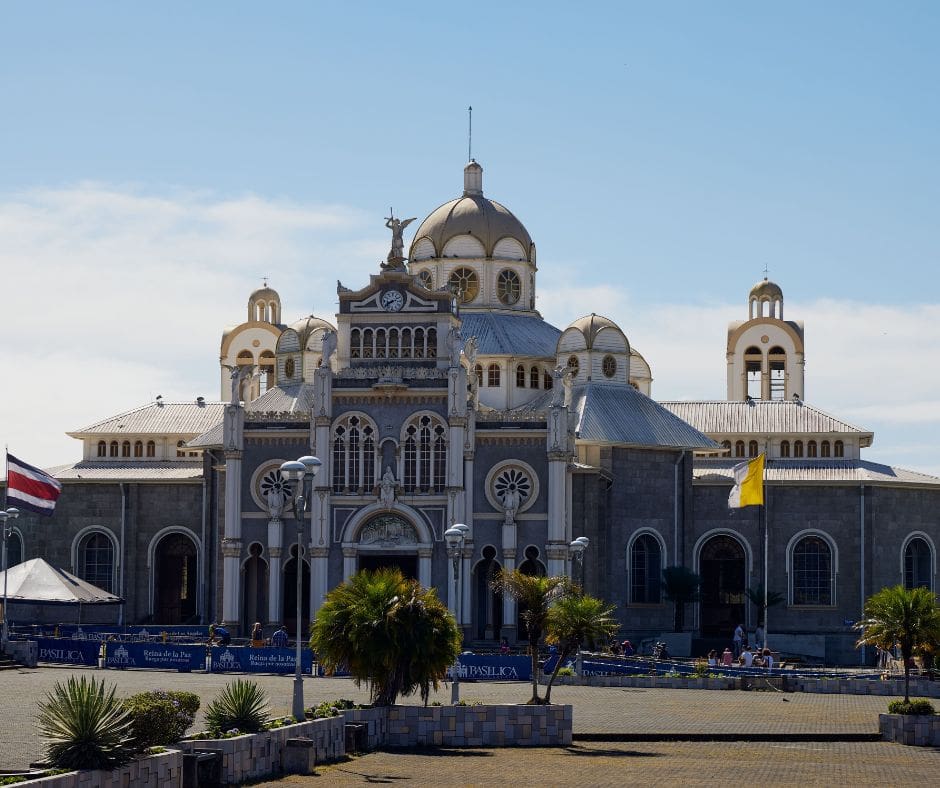Nestled in the heart of Cartago, the Basilica of Our Lady of the Angels, or “Basílica de Nuestra Señora de los Ángeles,” stands as a testament to Costa Rica’s rich spiritual heritage. This magnificent edifice, with its intricate design and profound historical significance, draws countless visitors and pilgrims each year. But what makes this basilica so special? Let’s delve into the captivating history, the reason behind its construction, its cultural impact, and the intriguing myths and mysteries that surround it.
The Birth of a Sacred Site
The story of the Basilica begins in 1635 when a young indigenous girl named Juana Pereira discovered a small statue of the Virgin Mary on a rock near a spring. According to legend, every time Juana tried to take the statue home, it mysteriously reappeared on the rock the next day. Interpreting this as a divine sign, the locals decided to build a shrine at the site, which eventually evolved into the grand basilica we see today.
A Pillar of Faith and Culture
The Basilica of Cartago was officially completed in 1924, combining Byzantine and colonial architectural styles. It was built to honor the Virgin of Los Ángeles, who is affectionately referred to as “La Negrita” due to the dark color of the statue. This basilica is not only a place of worship but also a cultural cornerstone, symbolizing unity and faith among Costa Ricans.
The church holds immense significance for the nation, serving as the destination for the annual pilgrimage, “Romería.” Each August, hundreds of thousands of devotees walk from various parts of Costa Rica to the basilica, seeking blessings and miracles. This pilgrimage underscores the basilica’s role as a spiritual and cultural hub.
Papal Recognition
The importance of the Basilica of Cartago has not gone unnoticed by the Vatican. While no Pope has physically visited the basilica, it has received recognition from the Holy See. In 1926, Pope Pius XI elevated it to the status of a minor basilica, acknowledging its spiritual significance. Over the years, various popes have sent blessings and acknowledgments to the faithful who venerate “La Negrita.”
Myths, Mysteries, and Miracles
The Basilica of Cartago is shrouded in numerous myths and legends that add to its mystique. One of the most enduring tales is the story of how the statue of “La Negrita” repeatedly reappeared on the rock, defying efforts to move it. This phenomenon led the locals to believe that the Virgin Mary wanted her shrine to be built at that exact spot.
Another intriguing aspect is the spring where the statue was found. Many believe the water from this spring has miraculous healing properties. Pilgrims often collect this water, hoping for cures and blessings. The basilica’s walls are adorned with numerous offerings and tokens of gratitude from those who claim to have experienced miracles, ranging from crutches and braces to photographs and letters.
The architecture of the basilica itself is steeped in symbolism. The design elements, including its arches, stained glass windows, and domes, are said to represent various aspects of the Catholic faith, adding layers of meaning to the structure.
A Modern-Day Sanctuary
Today, the Basilica of Our Lady of the Angels continues to be a beacon of faith and devotion. Its serene ambiance, stunning architecture, and rich history attract visitors from around the world. The basilica stands as a reminder of Costa Rica’s spiritual roots and the enduring power of faith.
Whether you are a pilgrim seeking blessings, a history enthusiast exploring Costa Rica’s past, or simply a traveler in search of beauty and serenity, the Basilica of Cartago offers a profound and enriching experience.
The Basilica of Cartago is more than just a beautiful church; it’s a testament to faith, a beacon of hope, and a cornerstone of Costa Rican culture.






